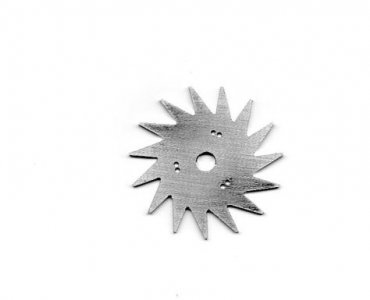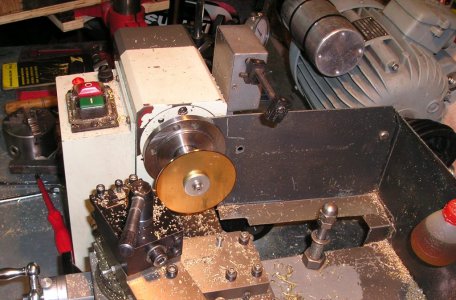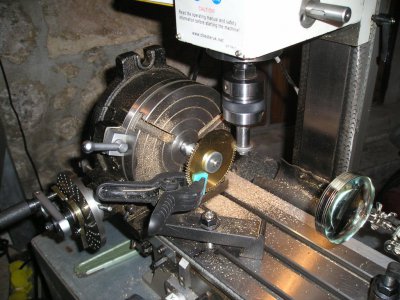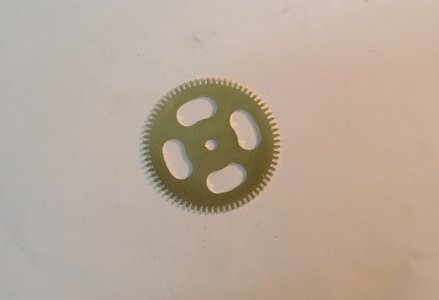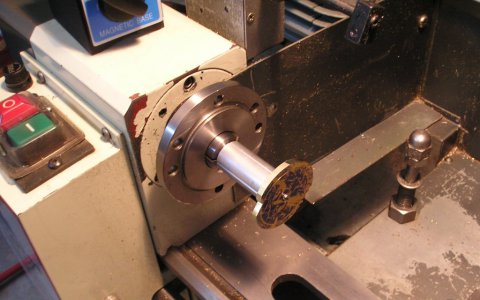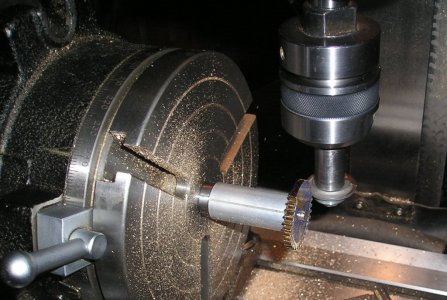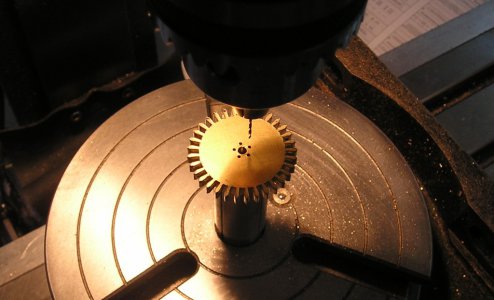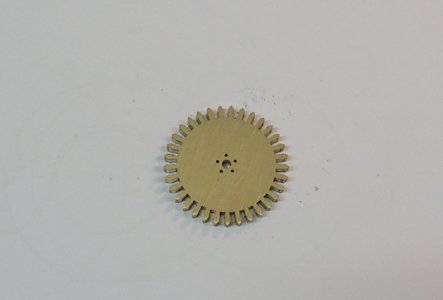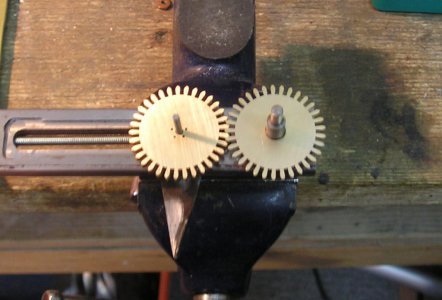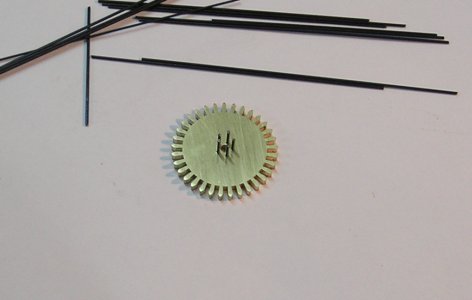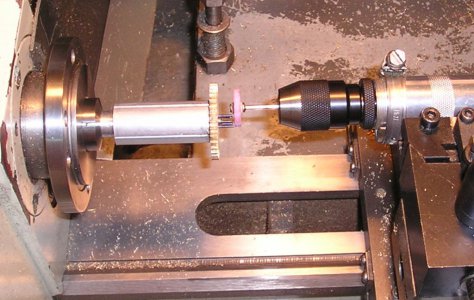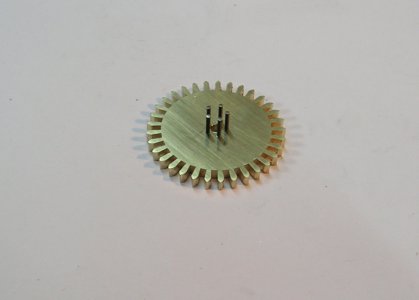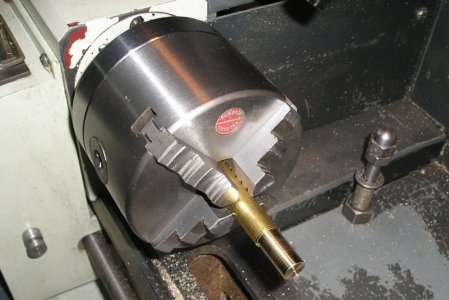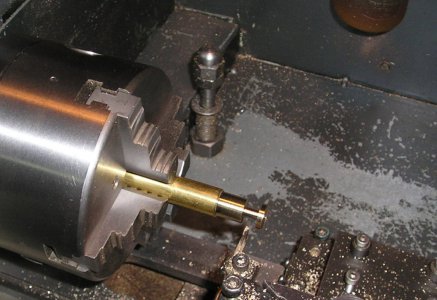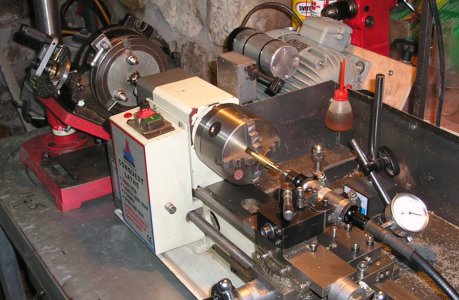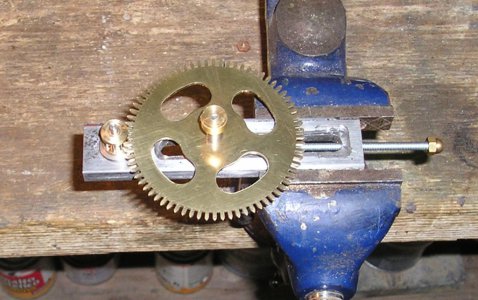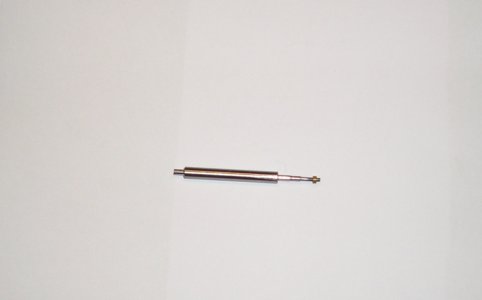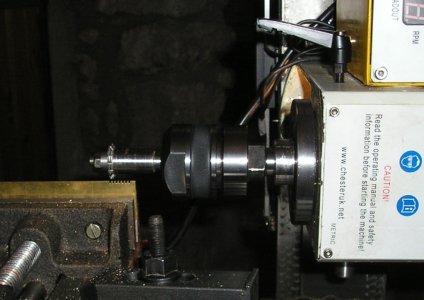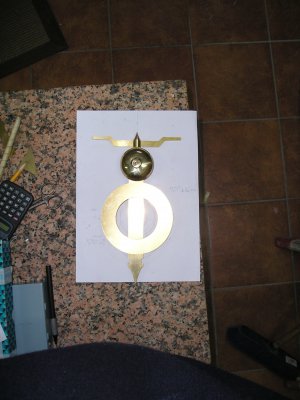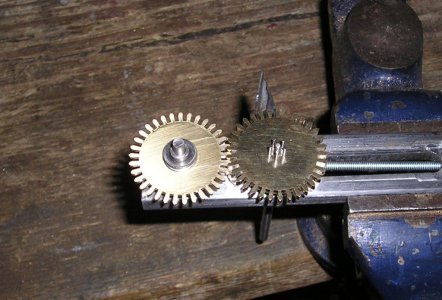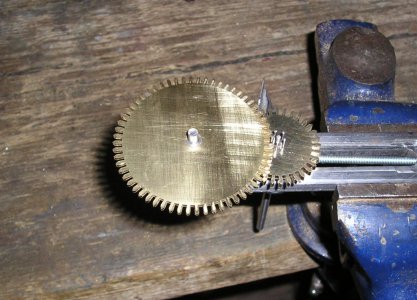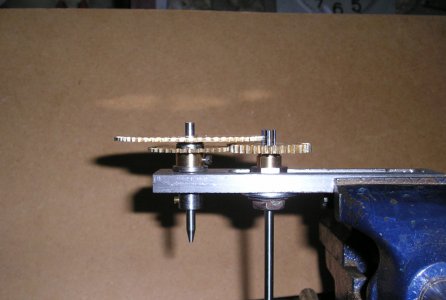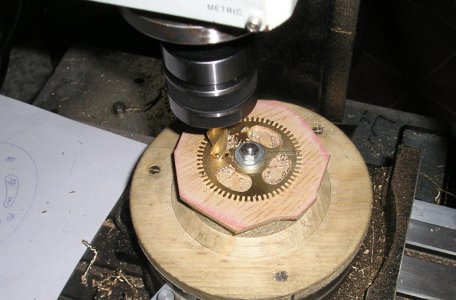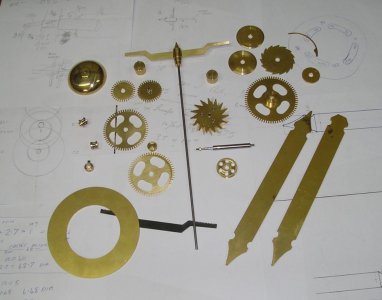B
BRIAN
Forum Guest
Register Today
Well it started with a call from my step daughter saying they will be ariving in 4 weeks for a holiday.
It just got me to thinking that it would be nice to give them a clock to take home.
So what clock ??? After making the Brass alarm most visitors to the house are facinated by the Foliot swinging on the top so that is a good start. the alarm is not very useful, but a one strike on the hour is nice to have, and simple to do,it must be simple to make as i have only 4 weeks and a lot of other things to do.
So i am throwing traditional ideas out. this clock will be made, On the fly! KISS and ASAP are the key words.
So yesterday afternoon I made a few basic notes to get the layout of the gears. and ended up with a clock that will tick 33.7 times a minute.
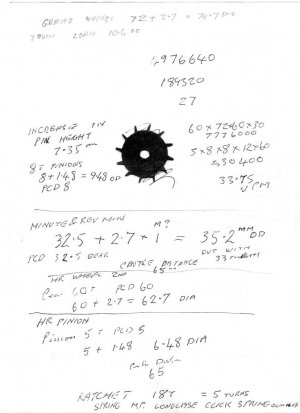
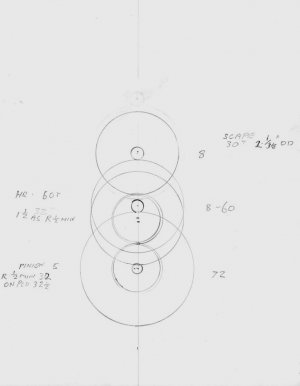
This afternoon its into the shop to start making chips.
I started on the escapement because I wanted to try a different method of making this component.
this scape has 2 wheels so the blanks where cut together.
To start with 15 radial cuts where made 3/8'' deep.
then the cutter was raised until its lower edge was just level with the top of the cut one slot up.
The cutter was then raised a further .020'' to give a flat top to the teeth.
Then the cutter was fed in until the to cuts met.
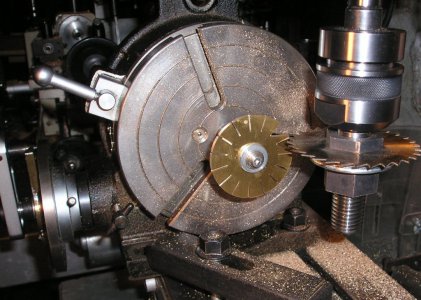
With the unused slides locked the remainind teeth were formed.
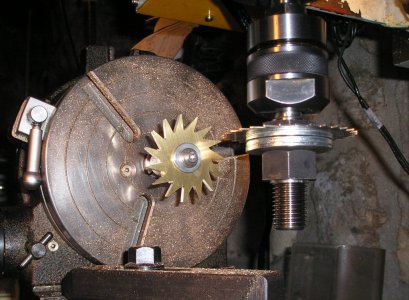
The dividing head was then moved onto its back to drill the fixing holes .
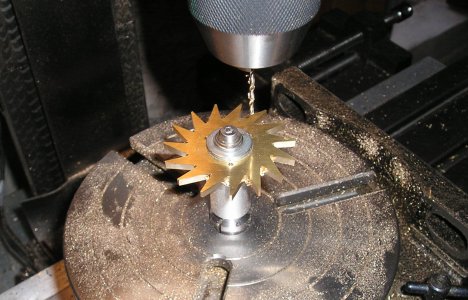
As the slitting saw was set up The faces of the ratchet teeth where cut also.
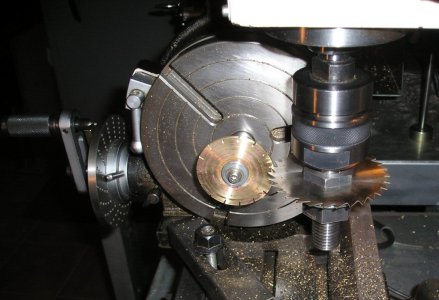
The back of the teeth will be formed by hand.
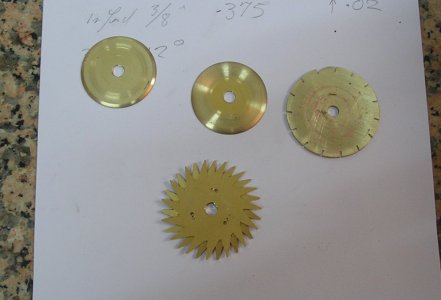
To finish the day I made 2 flanges for the winding system.
Well thats it started Brian.







It just got me to thinking that it would be nice to give them a clock to take home.
So what clock ??? After making the Brass alarm most visitors to the house are facinated by the Foliot swinging on the top so that is a good start. the alarm is not very useful, but a one strike on the hour is nice to have, and simple to do,it must be simple to make as i have only 4 weeks and a lot of other things to do.
So i am throwing traditional ideas out. this clock will be made, On the fly! KISS and ASAP are the key words.
So yesterday afternoon I made a few basic notes to get the layout of the gears. and ended up with a clock that will tick 33.7 times a minute.


This afternoon its into the shop to start making chips.
I started on the escapement because I wanted to try a different method of making this component.
this scape has 2 wheels so the blanks where cut together.
To start with 15 radial cuts where made 3/8'' deep.
then the cutter was raised until its lower edge was just level with the top of the cut one slot up.
The cutter was then raised a further .020'' to give a flat top to the teeth.
Then the cutter was fed in until the to cuts met.

With the unused slides locked the remainind teeth were formed.

The dividing head was then moved onto its back to drill the fixing holes .

As the slitting saw was set up The faces of the ratchet teeth where cut also.

The back of the teeth will be formed by hand.

To finish the day I made 2 flanges for the winding system.
Well thats it started Brian.









